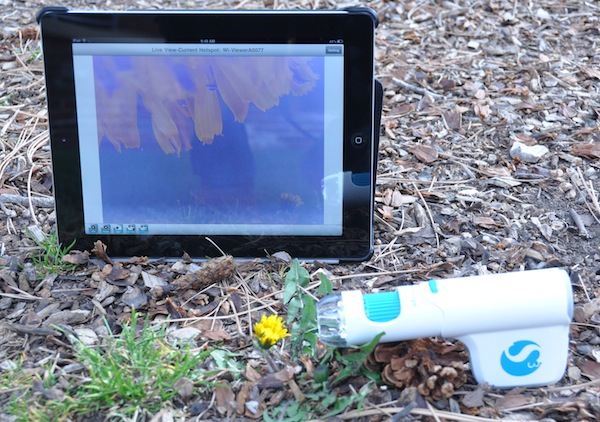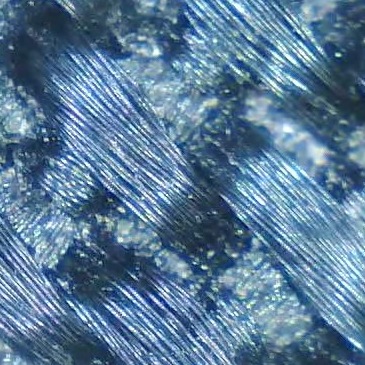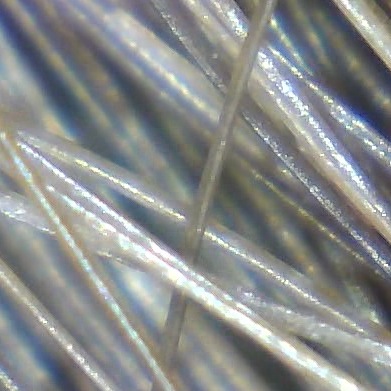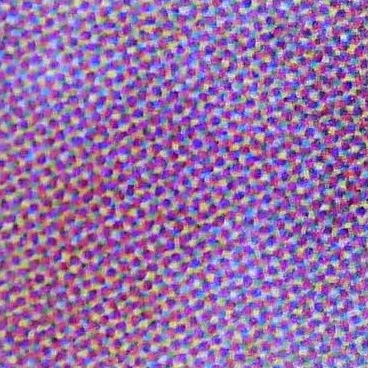Flatten the Classroom with the iGo Microscope
By Martin Horejsi
Posted on 2013-05-03
Although many handheld technologies of Star Trek seem antiquated, or perhaps even steam punkish in todays world, there are still a few pieces of Treknata that we dream of. But that list just got one item shorter with the iGo wireless microscope. While not quite a Medical Tricorder, the iGo does capture the essence of Trekian magic with its scope in the right hand while the microscope image appearing on a tablet in the left hand (or vice-versa of course).
A medical tricorder would, in theory, allow the placement of a probe upon various parts of an injured subject in order to collect the data necessary for a proper diagnosis. Of course later iterations of the Enterprise’s wanderings utilized scanning tools that completely circumvented both the need for probes, and the interpretation of data. But that is a topic for another blog-perhaps one about the Standoff Patient Triage Tool.
The SmartScope iGo wireless microscope is a substantial push forward flattening the access to the microscopic world in the classroom. iPads and other tablets are rapidly becoming the digital hubs of powerful portable science laboratories that operate independent of power outlets, the greater internet, and often wires in general. SmartSchool’s iGo microscope opens many new inquiry avenues previously barred by wired network connections, power requirements, prohibitive costs, and complex user interfaces.
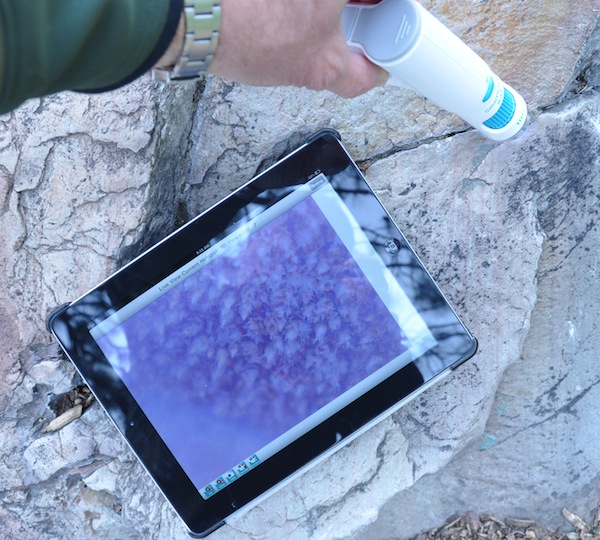
The iGo scope is easy to use, and quickly generates highly magnified images on a tablet screen where they can be captured into the tablet’s photo database.
Priced about the same as one base model iPad Mini, the iGo Microscope boasts an intuitive interface complete with large focus wheel, adjustable LED lighting, and picture button all running on three rechargeable AA batteries (included). But the real thrill of iGo is found in combination with the free App named Wi-Viewer. The iOS Wi-Viewer app / Android app to shows, captures, and plays back the visual magic of the microscopic world.
The minimalist interface of Wi-Viewer includes just four buttons: one to turn on or off the real-time images from the iGo, one to capture a still image, one to start and stop video recording, and one to playback the captured content. At first launch the Wi-Viewer will ask if it can connect to the photo database on the tablet. If agreed to, then the images snapped with the iGo land in a familiar home on the tablet. And in case you didn’t know, if two iPads are connected using a sync cable and the camera connection kit USB dongle, the photos on the sync-cabled iPad will appear as importable images on the camera connection dongled iPad.
The published specifications of the iGo include a 3.5 hours of runtime per triad of AA batteries (YMMV), a maximum of 200x magnification (depending on device screen size), and a 10 meter wireless range which all seems about right in my tests.
What isn’t a promoted spec of this scope its 640×480 resolution. On the surface, the sub-megapixel number seems old school. However, the Smart Scope iGo is designed for tablet use and, in fact, has no interactivity with any device outside iPads and compatible Android tablets (equal to or greater than iOS 4.1 and Android 2.3). In other words, the apparent low resolution makes little difference since the visual output of the scope is within reasonable limits for tablet screens. Printing is another story. But three important issues must be considered beyond pure resolution numbers and they are 1) the video signal is being transmitted wirelessly from a 2) reasonably inexpensive digital microscope 3) fueled by 4.5v of rechargeable AA power. And note that an iGo with batteries masses out at not much over 200g.
Regarding the first generation iPad, (aka iPad 1, non-camera iPad), this scope works fine as long as you are running an updated version of iOS. So the iGo scope will breathe new life into an old iPad!
Where the iGo does preform off the charts is with its flexibility, simplicity, and speed of operation. For years I have professed the seeming heretical point of view that learning to use a microscope is a physics activity while the studying microscopic imagery is the actual purpose of a microscope. What I mean by this is the microscope, although necessary given the limitations of human eyesight, is actually an impediment to macroscopic inspections. The fewer barriers one places between the small object and the ability to view it, the better. The iGo makes macroscopic observations so intuitive that students will explore the world of the small with reckless abandon, and overt curiosity!
Focusing from infinity to the scope’s surface in less than one turn of the focus wheel brings the entire world into clear view through a natural motion of one opposable thumb that also points the scope. There has been a bit of convergent evolution with handheld microscope designs with my prediction of something of stylus shape in the not-too-distant future. An interesting repository for design trajectories might be to mine an auto mechanic’s toolbox rather than a science laboratory from last century. Often, initial digital device designs are steeped in traditional morphology. One early school-based digital microscope, the Intel QX3 had more than a passing resemblance to a compound light microscope so it also inherited many of the limitations of the centuries-old design. Therefore it is especially rewarding to have the latest digital microscope designs push function over familiar form. An FYI for those with geek leanings, the groundbreaking Intel QX3 had a resolution of 320×240 and an operation familiar to traditional microscopes.

The Intel QX3 microscope was groundbreaking in its time (discontinued in 2002), but still maintained a strong relationship to conventional microscope designs complete with stage, rotating (compound) magnification settings, lighting, and much too big to fit into a computer bag pocket.
The iGo is a 2.4GHz wireless device using the 802.11b/g/n protocols encouraging an interesting and welcome twist to multiple connections. Up to three compatible devices (iPad, iPod Touch, iPhone, Android of any flavor can simultaneously tap into the video stream from the iGo meaning that the tablet’s user can control what video (MPEG4) and images (jpeg) are captured and when; all completely independent of the other two devices!
[youtube]http://www.youtube.com/watch?v=Heuu7jwuF3w&feature=share&list=PL2yY153_kjIfWFDHAwg12ETKiSpDNEIgJ[/youtube]
The 802.11 wireless connection is a double-edged sword, however. Since a device can only log into one wireless network at a time, using the iGo with a classroom-projected image is limited to a hardwire connection through the dock port. Both Apple TV and most screen-throughput Apps running on projector-connected computers are off limits due to the single wireless channel connectivity. Since the iGo has a fairly robust 10m range (roughly line-of-sight), a projector-connected tablet can be stationary while the teacher and students use the scope to project objects of interest from anywhere in the classroom.
Anything we place between our retinas and the microscopic world can be considered a limitation. For the tablet ecosystem, the iGo Microscope just pushes those limitations down the road for later technology to solve. And some of that later tech might already be here…
Disclaimer: The views expressed in this blog post are those of the author(s) and do not necessarily reflect the official position of the National Science Teaching Association (NSTA).



